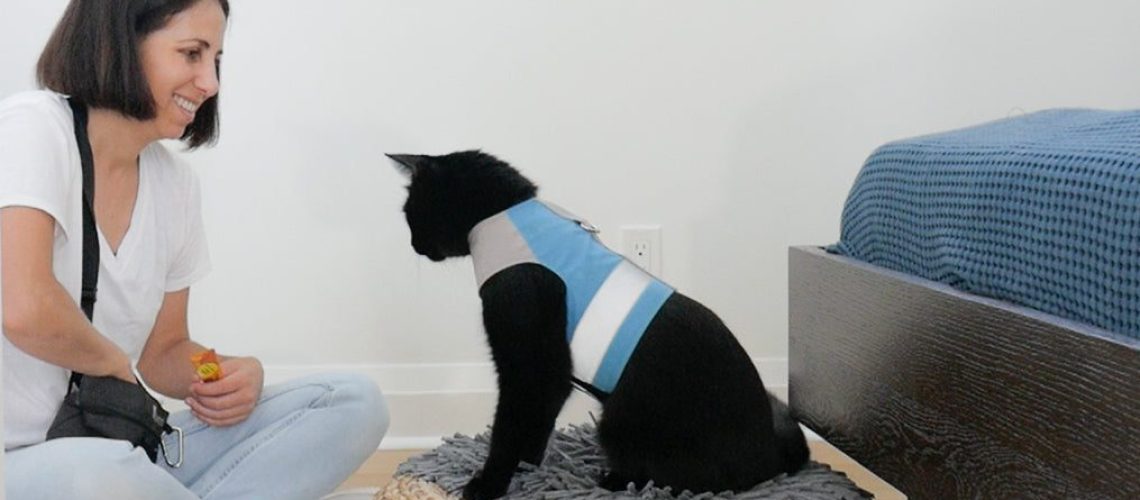Are you tired of your furry feline friend scratching up your furniture, ignoring your commands, or leaving surprises in unexpected places? Well, look no further! Mastering Cat Training: Top Tips and Tricks is here to save the day. By delving into the world of cat training, you'll unlock a whole new level of understanding and connection with your beloved pet. Not only will you gain valuable insights into why cats behave the way they do, but you'll also discover effective techniques to mold their behavior to your liking. With just a little bit of knowledge and practice, you can transform your mischievous kitty into a well-behaved companion. So why wait? Let's embark on this journey together and uncover the secrets to mastering cat training!
Key Takeaways:
- Consistency is key when training a cat. Establish a routine and stick to it to help your cat understand what is expected of them.
- Positive reinforcement is the most effective method for training cats. Reward good behavior with treats or praise to encourage them to repeat it.
- Cats respond well to clicker training. Use a clicker to mark desired behaviors and then reward your cat immediately afterwards.
- Patience is necessary when training a cat. It may take time for them to understand and learn new commands, so be patient and persistent in your efforts.
- Avoid punishment-based training methods as they can create fear and anxiety in cats, leading to negative behaviors. Instead, focus on positive reinforcement and redirection techniques.
Important Tips for Training Your Cat
Consistency is Key
When it comes to training your cat, consistency is key. Cats thrive on routine and repetition, so it's important to establish a consistent training schedule. Set aside specific times each day for training sessions and stick to them. This will help your cat understand what is expected of them and make the training process more effective.
Patience and Positive Reinforcement
Training a cat requires patience and positive reinforcement. Cats respond best to rewards and praise when they exhibit desired behaviors. Whenever your cat successfully performs a trained behavior, reward them with treats or verbal praise. This positive reinforcement will encourage them to continue displaying the desired behavior in the future.
Avoid Punishment
Avoid using punishment as a method of training your cat. Cats do not respond well to punishment, and it can lead to fear or aggression. Instead, focus on rewarding good behavior and redirecting unwanted behavior using positive techniques such as clicker training or providing alternative outlets for their energy.
Establishing a Positive Relationship with Your Cat During Training
Bonding Through Playtime
One of the best ways to establish a positive relationship with your cat during training is through playtime. Engaging in interactive play sessions with your cat not only provides physical exercise but also strengthens the bond between you two. Use toys that stimulate their natural instincts like chasing or pouncing, and incorporate short training exercises into these play sessions.
Tips for Interactive Play:
- Use wand toys or laser pointers to engage your cat in active play.
- Vary the types of toys you use to keep their interest levels high.
- Ensure that playtime is a positive experience for both you and your cat by avoiding rough play or using hands as toys.
Creating a Safe and Comfortable Environment
During training, it's essential to create a safe and comfortable environment for your cat. This means providing them with a designated space where they feel secure and can focus on the training sessions. Make sure the training area is free from distractions and noises that could disrupt their concentration. Additionally, ensure that the training area has all the necessary supplies, such as treats, clickers, or target sticks, within easy reach.
The Importance of Using Positive Reinforcement Techniques when Training Cats
Building Trust and Confidence
Using positive reinforcement techniques in cat training helps build trust and confidence between you and your feline friend. When cats receive rewards or praise for exhibiting desired behaviors, they associate those behaviors with positive experiences. This positive association encourages them to repeat those behaviors in the future, leading to successful training outcomes.
Examples of Positive Reinforcement:
- Giving treats or small food rewards immediately after your cat performs a trained behavior correctly.
- Praising your cat with gentle petting or verbal cues like "good job" or "well done" when they follow commands.
- Using clicker training to mark desired behaviors followed by an immediate reward.
Avoiding Fear and Anxiety
Positive reinforcement techniques also help prevent fear and anxiety during the training process. Cats are sensitive creatures who may become fearful or anxious if subjected to punishment-based methods. By focusing on rewards and praise instead of punishment, you create a safe learning environment that promotes trust and reduces stress for your furry companion.
Overcoming Common Challenges in Cat Training
Understanding Individual Personality and Learning Styles
One common challenge in cat training is understanding that each cat has a unique personality and learning style. Some cats may be more eager to learn and respond quickly to training, while others may be more independent or easily distracted. It's important to tailor your training approach to suit your cat's individual needs and preferences.
Tips for Tailoring Training:
- Observe your cat's behavior and adjust the training pace accordingly. If they seem overwhelmed or disinterested, slow down and break the training into smaller steps.
- Use high-value treats or rewards that appeal to your cat's taste preferences to motivate them during training sessions.
- Experiment with different types of training techniques, such as clicker training or shaping, to find what works best for your cat.
Persistence and Consistency
Persistence and consistency are key when it comes to overcoming challenges in cat training. Cats may not always grasp a new behavior immediately, so it's important not to give up too soon. Keep practicing the desired behavior consistently, reinforcing it with positive rewards until your cat understands what is expected of them.
Simple Tricks to Teach Your Cat
Sit Command
The "sit" command is one of the simplest tricks you can teach your cat. Start by holding a treat close to their nose, then slowly move it upwards towards their head. As their head moves up, their bottom will naturally lower into a sitting position. Once they are fully seated, give them the treat as a reward and praise them with phrases like "good sit!" Repeat this process several times until your cat associates the command "sit" with the action.
Paw Shake
Teaching your cat to shake paws can be a fun and adorable trick. Begin by gently touching their paw and saying "shake." As soon as they lift their paw even slightly, reward them with a treat and lots of praise. Repeat this process, gradually increasing the duration of paw contact before giving the reward. Eventually, your cat will learn to raise their paw on command.
The Typical Time Frame for Successful Cat Training
The time frame for successful cat training can vary depending on several factors, including the complexity of the behavior being taught and the individual cat's personality and learning ability. Simple tricks like "sit" or "paw shake" can often be learned within a few weeks of consistent training sessions.
However, more complex behaviors or commands may require months of consistent training before your cat fully grasps them. It's important to be patient and not rush the process. Remember to break down complex behaviors into smaller steps and reinforce each step with rewards to ensure steady progress.
Avoiding Risks and Dangers in Cat Training
Using Safe Training Equipment
When training your cat, it's crucial to use safe equipment that poses no risk or danger to them. Avoid using any tools or devices that could cause harm or discomfort, such as shock collars or choke chains. Opt for positive reinforcement techniques instead, using treats, clickers, or target sticks as training aids.
Ensuring a Stress-Free Environment
Cats are sensitive creatures who can easily become stressed or anxious in certain environments. To avoid unnecessary stress during training sessions, choose a quiet and calm area where your cat feels comfortable. Minimize distractions like loud noises or other pets that could disrupt their focus. Creating a stress-free environment will help your cat stay relaxed and receptive to training.
In conclusion, training your cat can be a rewarding experience with the right techniques. By using positive reinforcement and patience, you can teach your furry friend new tricks and behaviors that will make both of your lives happier and more harmonious.
What commands can cats learn?
Cats have the ability to learn various commands such as sitting, rolling over, and shaking paws. However, cats have their own pace of doing things, so training them requires a lot of motivation, dedicated time, and most importantly, patience.
Is it OK to spray cat with water?
Using a squirt bottle to spray cats is not a form of positive reinforcement, but rather a punishment. The most effective way to encourage desirable behavior in your cat is by providing them with options to express their needs and rewarding them when they choose the desired option.
How do you train a high energy cat?
By incorporating playtime into your routine with your cat, you can decrease undesirable or excessive behavior. Utilizing toys that are suitable for cats, like interactive LED lasers or tennis balls that can hold treats, can be effective. According to Dodman, engaging in structured playtime allows you to have fun, interact with your cat, and channel their energy.
How do you train a stubborn cat?
Make sure your cat has a variety of toys and dedicate some time each day to playing with them, such as throwing a ball or crumpled piece of paper for them to chase. Guiding your cat to engage in these natural behaviors in suitable locations and times is the most effective approach to addressing these issues.
How long does it take to train your cat?
Typically, it takes one to two sessions of in-home dog and cat obedience training to teach your pet what you want them to learn. However, if you need help with behavioral issues like fears, phobias, and aggression, it may take 2-3 sessions scheduled every two weeks or once a month, depending on the situation.
What language do all cats understand?
According to Glover, cats cannot comprehend human words due to their limited cognitive abilities. Cats understand language in a similar way to how we understand their meows - they know we are communicating with them but do not fully understand the meaning of our words.

















